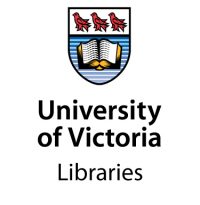Abstract (excerpt):
The built environment is responsible for a large portion of total energy use and emissions. A large portion comes from the buildings themselves, but also the transportation system to move people around. As global populations grow, and more people migrate to cities, it is critically important that new city growth is done in the most sustainable manner possible. The typical North American pattern of urban growth is urban sprawl, characterized by single use type zoning, low density, transportation system dominated by personal vehicles, and poor public transit. Urban sprawl has numerous downsides, including poorer energy efficiency in buildings and infrastructure, more congestion and higher emission from vehicles, as well as many negative health effects. This thesis presents the concept of a Mothership, a large, high-density mixed-use building designed to combat urban sprawl and minimize energy use and emissions of the built environment. A mothership is designed to provide all the amenities and housing of a typical suburb for 10,000 people. The analysis in this thesis employ building simulation tools to model various mothership designs and analyse the operational and embodied energy and carbon emissions for each design, and compare it to base cases of more traditional building use types such as single detached homes, and different types of apartment buildings…Some of the measures explored are a high carbon tax, net metering, and emissions limits of net zero, and negative emissions with two different electrical grid carbon intensities. Results showed that a highly insulated, timber framed mothership can achieve very high reductions in energy use and emissions. Overall it showed reductions of 71%, 73%, and 74% in operational energy, embodied energy and embodied carbon respectively, over a baseline case of single detached homes. It was estimated that transportation emissions could be reduced by 58% through the mixed-use development reducing the number of trips and electrically powered transportation vehicles and bus rapid transit. This gives a combined total emissions reduction of 61%. …This illustrates that the integration of renewable energy technologies is not only beneficial for reducing emissions but can also act as an income pathway for energy systems.
To read more, visit UVicSpace
*UVic’s open access repository, UVicspace, makes worldwide knowledge mobilization possible. Through this platform, researchers at any institution have access to dissertations (and theses and graduate projects) published by our graduate students. This also makes works available to the interested layperson, who may be engaged in learning more about the research being done at UVic, with no paywall. UVic’s graduate students are doing valuable research every day – but sometimes it goes unsung. Our goal with this series is to shine a light on our students by featuring excellence, one achievement at a time.
The UVic LIbraries ePublishing Services Team
